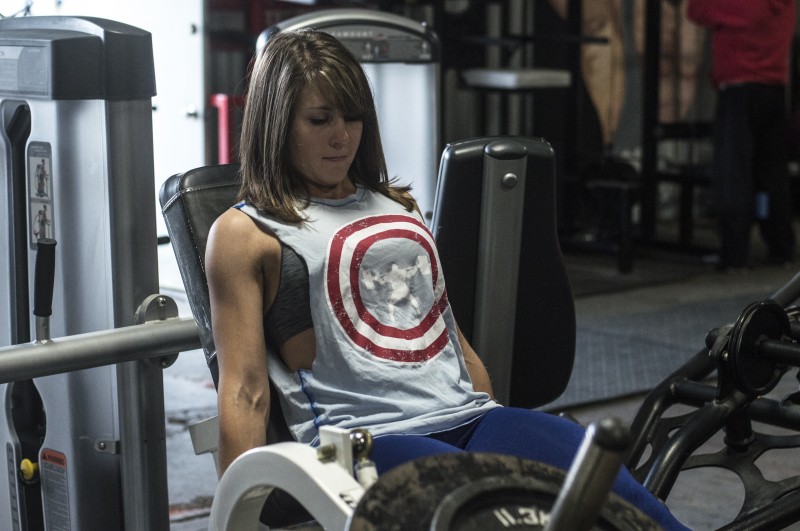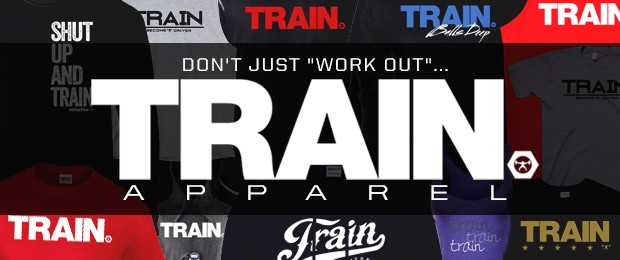
Many of the clients I’ve worked with in the past year are moms, in their 30s or older, and they are total novices to lifting. The only form of activity they’ve done is run, possibly spin, and the last time they did something “organized” was in high school.
These women comprise a significant portion of the training market at large — women who take up resistance training in their 30s, 40s, or beyond, and have ZERO background in training their upper body, let alone lifting in general.
RELATED: Training Women: Deadlift Considerations
Their training needs are worth recognizing, as most mainstream fitness advice tends to be oriented towards 20-somethings, or for lifters who are already recreationally lifting. The novice female client is often neglected.
Piece by Piece
For female trainees who have never trained upper body, you are starting from absolute zero. They have no mind-muscle connection, they have no kinesthetic awareness, they may even mistakenly think that they “don’t have muscle” on their upper body at all.
When a female client tells me, “I’ve never had a strong upper body” or, “I’ve always been bad at push-ups/pull-ups”, I ask if they’ve ever trained their upper body.
The answer is always NO.
This speaks to the false perception many women have, that being strong is something that someone is naturally “good” at. For many women, there is a complete disconnect between training, strength, and muscle. They do not connect the two at all as being remotely related. The knowledge then that upper body strength is dependent upon muscle, and that they don’t have any, explains why they are not good at push-ups. It can be very revelatory for them.
Training women at this level mandates a “piece by piece” approach. By training each muscle group in isolation, I can do a few things:
- Mentally, it is always easiest to focus on ONE thing.
- Increasing innervation to a previously unused muscle requires singular focus.
- I can create a mental map of the muscles and anatomy by covering each one individually.
- The client learns that different exercises train different muscle groups.
- Isolation movements are more likely to be felt than compound movements.
- When compound movements are used, coordination and overall comprehension of the movement demands will be higher than compared to introducing compound movements first.
The continuum then is to isolate, then integrate.
Isolation movements like kickbacks, pushdowns, extensions, front and side delt raises, chest flies, and curls are all worthwhile movements.
- They develop innervation.
- They WILL build muscle in novice lifters (who are going from zero to one in regards to training).
- Light loads can be used and for moderate to high reps. Female clients, especially petite women, are often staggered by five-pound weight jumps. Working up to 15-20 reps with a given weight is a good marker before progressing to a heavier weight.
- They are easy to remember.
- They develop the connection tissue/joint strength necessary to do compound movements with heavier loads.
This is not a fixed continuum. It’s simply a strategy.
To give an operative example, an upper body workout could resemble the following:
Beginner Upper Body — Push/Pull
A1. Band Face Pull 3 x 20
A2. Band Chest Pull 3 x 20
B1. DB Front Raise 3 x 10
B2. DB Medial Delt Raise 3 x 12
B3. DB Overhead Press 3 x 15
C. DB Low Incline Chest Press 4 x 10-15
D1. DH Hammer Curl 3 x 12
D2. DB Kickback 3 x 12
E. Band Rear Delt Pulse 3 x 20
While the total working sets are 28, the intensity is low relative to the loads being used (five to 15 pounds), and a variety of exercises are used in a manner that creates continuity/flow to the overall session.
What about the Big Three?
I bring this up, as there is often a dogmatic persistence that the barbell is all that needs to be used, or that compound movements are the only movements worth doing, and everything else is a waste of time. This paradigm speaks to someone’s lack of ability in both practice and in thinking. What someone chooses not to do does not denote the quality of what they do DO.
Or said another way, stating you don’t use XYZ exercise does not mean you aren't any good at training. Probably the opposite, in fact. Wanting to only use a hammer does not make everything else a nail.
Handling a barbell assumes:
- A preexisting operative level of strength that a 45-pound bar is easy to manipulate.
- An assumption that the client needs are best served by doing the barbell version of the movement.
- An extended assumption that the barbell is the superior means to working the musculature/movement of the body.
The first assumption is overly optimistic. The second is questionable. The third is just dogmatic, and not thinking at all.
The reality is that many female clients will be weeks or months away from handling the barbell with the necessary level of control and confidence. And the belief that the barbell is the end all, be all is paradigm blindness. Hypertrophy and strength development thereof are not instrument-dependent.
The most suitable “form” of resistance is contextual to the client and their particular needs state at the time. Whether that be barbells, dumbbells, kettlebells, bands, cables, or machines, they are all on an equal playing field. What is most appropriate is an executive decision made the by the trainer.
Train someone according to their needs, not your personal preferences.











